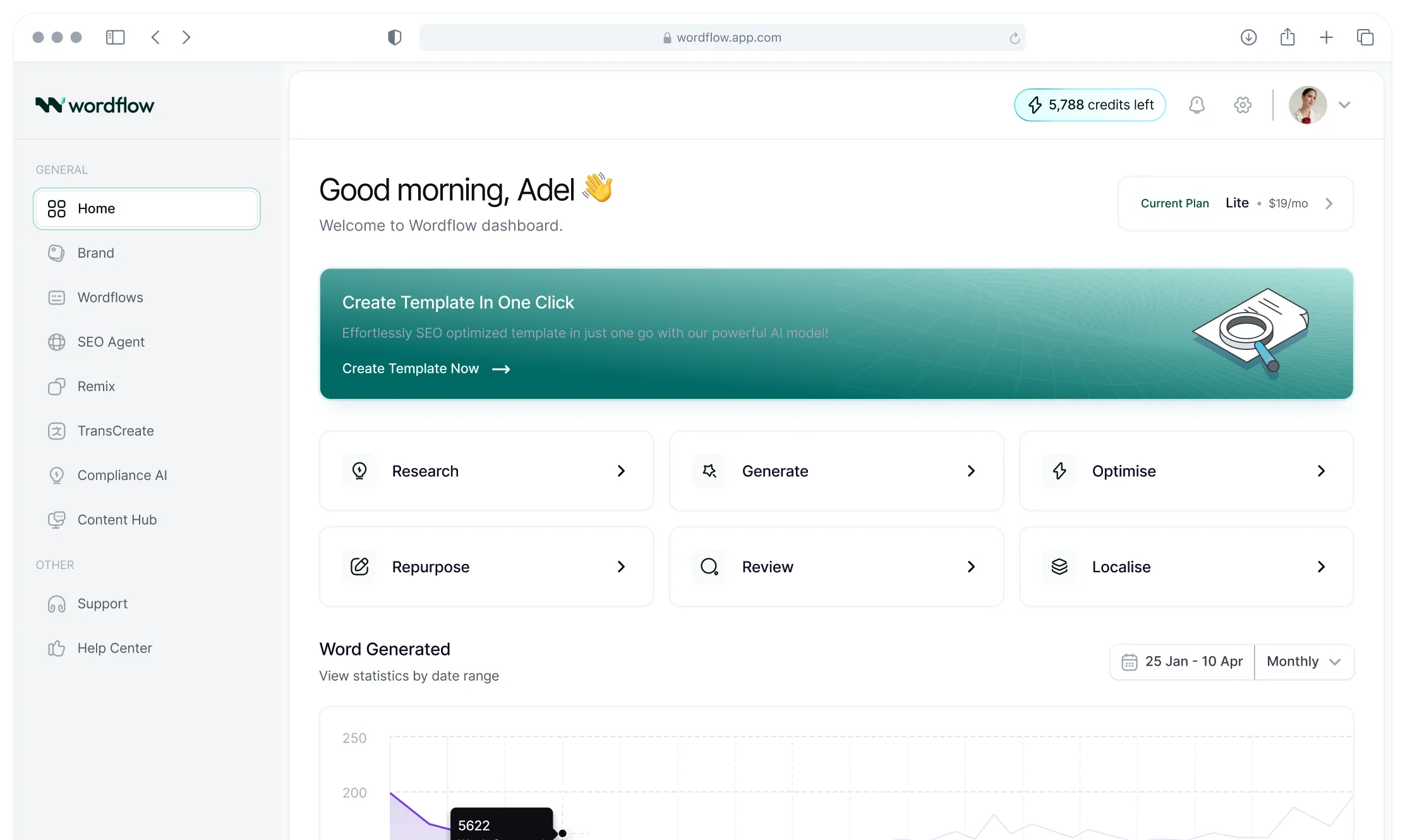
July 7, 2025
From SEO to GEO: Adapting for Visibility in AI Search Engines
Explore the shift from SEO to GEO and how to stay visible in a world of AI-generated search responses.

From SEO to GEO: Adapting for Visibility in AI Search Engines
Imagine someone asks ChatGPT for advice. Your carefully crafted blog post shapes the answer, but your brand? Nowhere in sight.
This is the new reality of online visibility in the age of AI. While traditional search engines rewarded links and rankings, generative AI tools deliver direct answers, often drawn from your content without attribution. But if AI tools rely on your expertise without naming you, what does that mean for your visibility, credibility, and discoverability?
A recent study found that 72.3% of professionals now turn to AI for research, making this shift more than just a trend. Emerging data suggests the impact goes deeper. Some companies are now seeing ChatGPT referrals outperform traditional channels, with conversion rates up to three times higher than organic search and 1.6 times higher than paid traffic.
For years, Search Engine Optimisation (SEO) has been the foundation of digital strategy. Marketers optimised for algorithms, earned rankings, and measured success in clicks. But now, search is shifting from pages of results to single, AI-generated responses. And with that shift comes a new concern: how should brands stay visible when there are no search engine result pages (SERPs)? And if AI models become the primary gatekeepers and qualifiers for trust and intent, how does this reshape branding, SEO and content strategy?
This is where Generative Engine Optimisation (GEO) comes in. It is a new phase where the goal isn’t just to be found, but to be referenced, trusted, and embedded in the responses AI delivers.
The evolution of SEO
To understand GEO, it’s important to first understand the origins of SEO and how it evolved to meet the growing challenge of user search behaviour.
When SEO was a numbers game
In the early 2000s, SEO was mechanical and focused on ticking boxes rather than delivering real value. Success meant stuffing keywords into every available space, from titles and headers to meta descriptions and even image alt tags. Marketers also spent hours tweaking meta tags and page elements, and building as many backlinks as possible, often without regard for content quality.
At that time, search engines relied on much simpler algorithms. Their ranking criteria were basic and easier to influence compared to the more advanced systems used today. Because of this, the competition was less sophisticated, and visibility often went to those who were most persistent, rather than to sites offering the most relevant or valuable content.
Smarter algorithms, smarter strategies
The widespread adoption of smartphone devices and the growth of e-commerce have fundamentally transformed how people search, shop, and interact online, driving Google to reimagine its approach to search completely. Users demanded fast, intuitive experiences across devices and more accurate, intent-based search results to guide their purchasing decisions.
This change in behaviour and expectations prompted Google's major algorithm updates, Panda (2011), Penguin (2012), Hummingbird (2013), RankBrain (2015), and BERT (2019), which marked a turning point in how content was evaluated and ranked. Emerging market factors urged Google to shift its focus from simple keyword matching to understanding user intent, context and content quality. Mobile use also made factors like mobile-friendliness, site speed, and overall user experience (UX) crucial to visibility.
The SEO stack expanded to include technical audits, structured data, UX design, semantic search, and E-A-T (Expertise, Authoritativeness, Trustworthiness). SEO became less about manipulating search engines and more about creating content that met the real needs of users in meaningful, accessible, and trustworthy ways.
Search everywhere
Then came another major shift: search moved beyond browsers and was embedded into everyday tools, such as voice assistants, smart TVs, AR/VR apps, and smartphone cameras. IoT and smart home devices introduced new access points for retrieving information and interacting with technology. People began searching differently, speaking to Alexa, scanning signs with their cameras, or using touch interfaces.
This was especially important for users with accessibility needs. Voice search became essential for aging populations who struggled with small screens and declining motor skills, offering a more hands-free way to access content. It also benefited users with visual impairments, mobility challenges, and conditions like dyslexia, for whom traditional text-based search was less effective.
In response, marketers adopted a search everywhere mindset, optimising content for maps, apps, voice, and AR experiences. While traditional SEO involves users typing fragmented keywords to find a list of links to explore, Search is now becoming conversational.
Users are talking to their smart devices using complete sentences and spoken language. For example, instead of typing “best coffee shop near me,” people ask, “What’s the best coffee shop nearby?” To optimise for voice search, content needs to reflect these natural speech patterns and match how people actually speak.
Additionally, since 58% of consumers use voice search specifically to find local business information, localising content becomes essential. This means including location-specific keywords, referencing neighbourhoods or landmarks, and ensuring business listings are accurate and claimed across platforms.
From search engines to conversational engines
AI tools like ChatGPT, Gemini, and Perplexity don’t behave like traditional search engines. Instead of listing links on SERPs, they generate synthesised answers, often drawn from multiple sources, without clear attribution.
According to Gartner, traditional search engine volume is expected to drop by 25%, with search marketing losing market share to AI search engines, chatbots, and other virtual agents by 2026. This signals a change in how users seek and receive information, one that demands a new approach to visibility.
The rise of GEO
These shifts have given rise to GEO, an emerging discipline focused on helping content surface in AI-generated responses. While SEO aims to boost rankings in SERPs, GEO focuses on creating content that AI can trust, understand, and cite.
Early research supports this approach. A study found that including clear citations, statistics, and structured formatting can boost a site’s inclusion in generative responses by up to 40%. Authority, trust, and clarity — long-standing SEO principles — are now even more crucial.
GEO isn’t just SEO with new rules; it represents a more profound shift in the industry. Instead of optimising for clicks, marketers must optimise for structure and citability. And with AI systems offering far less transparency than tools like Google Search Console, Semrush, or Ahrefs, success depends on experimentation, testing, and a willingness to work through uncertainty.
Why GEO matters now
As AI systems increasingly shape how information spreads, the ability to influence these responses becomes essential for staying competitive.
Companies that fail to adapt risk becoming invisible in the conversations that matter most to their audience. When a potential customer asks an AI assistant about industry best practices or product recommendations, your decades of expertise could be distilled into generic advice while competitors who've mastered GEO principles get the referral and mindshare.
This isn't just about traffic anymore; it's about maintaining relevance in a world where AI filters determine which voices get heard and which insights get forgotten. To keep up with this shift, brands need better visibility into how AI is using their content.
Tools like Wordflow help close this visibility gap by monitoring how brands appear across emerging AI search engines, including ChatGPT, Gemini, Perplexity, and Deepseek. It gives teams a clearer picture of their presence in AI-generated responses, helping them understand what’s working and where there’s room to improve.
How companies are adapting to GEO visibility
Creating AI-friendly content
To remain visible, companies are rethinking how they create and structure content. Instead of simply chasing keywords or backlinks, they’re prioritising depth, clarity, and authoritativeness, traits that AI systems are more likely to value when selecting source material.
A 2024 study found that structured, authoritative content, like FAQs and clear headings, was up to 37% more likely to appear in AI-generated answers on platforms like Perplexity AI. This includes clearly outlining the author’s credentials, providing up-to-date statistics, and using structured formatting to help Large Language Models (LLMs) understand and summarise the content more easily.
Workflow supports this approach by helping companies identify which content formats and topics AI systems favour, enabling more informed, targeted content creation of AI-friendly, authoritative content that resonates within AI-generated responses.
Improving technical clarity
Some organisations invest in technical and editorial practices designed to make content more legible and trustworthy to AI systems. This includes adding schema markup, writing in a concise and neutral tone, and using canonical URLs to reduce confusion across similar pages. For example, sites with complete schema markup may see up to 35% more clicks from search.
Others are taking it a step further by experimenting with synthetic Q&A formats, summaries, and glossaries that mimic how AI models present answers, in the hope of boosting their chances of being directly cited in AI outputs.
Wordflow complements these efforts by revealing which URLs and content assets AI engines reference most frequently. Understanding which pieces get cited allows teams to optimise their site structure and technical setup, improving clarity and trust signals that increase the likelihood of inclusion in AI responses.
Prioritising evergreen authority
Another common strategy is producing evergreen content that answers complex questions. Evergreen content generates 38% more traffic over time compared to time-sensitive posts.
These aren’t trend-driven blog posts. They’re pillar pieces designed to position the company as a go-to source of expertise. Companies are also paying closer attention to reliable sources, such as backlinks from academic institutions or government sources, as these may influence how AI ranks or selects content.
In addition to visibility metrics, Wordflow provides sentiment analysis on AI-generated brand mentions, categorising them as positive, negative, or neutral. This helps companies monitor and manage their authoritative image in AI outputs, allowing them to adjust messaging and strengthen credibility that builds lasting, evergreen authority.
Rethinking success metrics
Internally, some teams are restructuring how content is planned and evaluated. Rather than measuring success by pageviews alone, they’re tracking whether their content appears in AI-generated outputs.
This shift is moving GEO optimisation from a future concern to a core part of brand visibility strategy, one that increasingly blurs the lines between SEO, content strategy, and AI literacy.
Wordflow supports this by analysing real-world AI visibility and user interaction data, providing actionable recommendations on what types of content and channels the brand should prioritise. This data-driven guidance enables teams to focus on content topics and formats that maximise their chances of being seen and cited.
Where GEO fits in the SEO stack
One of the key strategic questions for marketers today is how GEO fits into the broader SEO landscape. Is it a separate discipline, or the next evolution of search strategy?
Many teams view GEO as an extension of SEO, built on the same principles of high-quality content, technical soundness, and user-first thinking, but reshaped to accommodate how AI systems interpret and present information.
This view is gaining favour, particularly among companies that recognise that while the fundamentals of SEO still matter, success now also depends on how content is structured, interconnected, and optimised for AI understanding. This often involves building knowledge ecosystems that LLMs can easily reference, in addition to what traditional SERPs require.
In practice, marketers may need to run parallel strategies: one for search engines and another for generative engines. And because AI platforms evolve quickly and offer limited transparency, GEO efforts must be flexible, experimental, and continuously informed by data.
Conclusion: Adapting to the new visibility stack
GEO isn’t just about being seen, it’s about being useful, remembered, and trusted by AI. As generative engines become the first point of contact for many users, brands must rethink not only how they show up but where and why they appear along the customer journey. Visibility alone no longer guarantees value or engagement; relevance and authority within AI-driven contexts are what truly matter.
At Wordflow, we help marketers navigate the shift from SEO to GEO with clarity and control. By tracking your brand’s presence across leading AI search engines, our platform reveals where your content is being cited, how it’s perceived, and what you can do to improve.
With real-time insights and tools purpose-built for AI-era visibility, Wordflow gives you the edge in a world where generative engines are rewriting the rules.
Read More
Artifical Intelligence.
Real Results
Get started with Wordflow—the agentic platform built for modern marketers. Start your free 7-day trial today and experience the difference.








